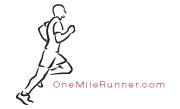Here is a video showing The Toe Touch Matrix. This exercise really works the proprioceptors in your feet. It mobilizes your hips, knees, and ankles. Instead of touching with your hands in a balance reach, touch the 10 matrix spots with your toes. Spend close attention to the back corners of the matrix as those spots really hit difficult areas of your body. Again, this is a multi-directional, multi-joint, and multi-muscle exercise.
Take a few moments to shake up your balance and fire this one-legged exercise that you will feel way up in your glutes!


